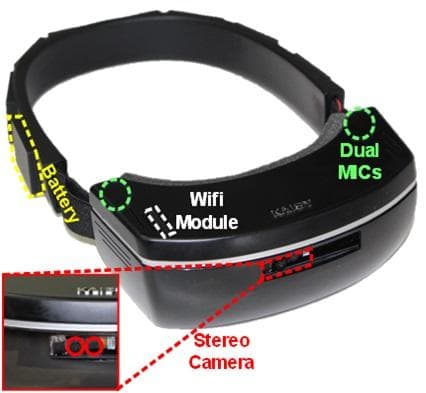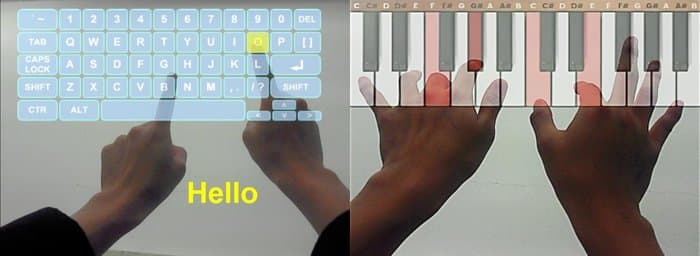K-glass 3 Featuring Augmented Reality To Be Launched Soon
Professor Hoi-Jun Yoo and with his team from the Electrical Engineering Department of the Korea Advanced Institute of Science and Technology (KAIST) is set to launch the latest version of K-glass, an augmented reality embedded smart spectacle. Named as K-glass 3, it offers a virtual typing keyboard and piano for typing texts or keywords.
The contemporary head-mounted displays (HMDs) lack an efficient user interface and bears poor battery life. Some wearable spectacles such as the Google glass offers a touch panel and voice command feature, but it is simply an extended smartphone technology and lacks optimization for smart glasses. To upgrade the design, KAIST came up with the brand new K-glass 3 which boast of low-power natural UI and UX processor.
 It enables convenient typing and screen pointing on HMD’s by using just our bear hands. The embedded processor consists of three parts, including a pre-processing core to implement stereo vision, seven deep-learning cores to boost scene recognition and one engine for the display.
It enables convenient typing and screen pointing on HMD’s by using just our bear hands. The embedded processor consists of three parts, including a pre-processing core to implement stereo vision, seven deep-learning cores to boost scene recognition and one engine for the display.
The K-glass 3 boasts of a stereo vision 3D camera which is placed in the front and mimics the
3D vision of human eye. The right and left lenses of the camera captures images of the same scene and finally these two images are combined to infer exact information about spatial depth. The proprietary vision algorithm used in the camera has an energy efficiency of 20 milliwatts, and backs up the device for an interruption-free 24 hours.

Owing to the deep-learning-multi core technology, this gesture controlled device has been greatly enhanced. The newly constructed one takes minimal time to analyse data and possesses greater sensing power. With all these desirable features, it’s definitely a device to try out on as soon as it launches in the market. The research was presented in the IEEE International Solid-State Circuits Conference (ISSCC) held on January 31-February 4, 2016 in San Francisco, California.
Watch how K-glass3 works:
The contemporary head-mounted displays (HMDs) lack an efficient user interface and bears poor battery life. Some wearable spectacles such as the Google glass offers a touch panel and voice command feature, but it is simply an extended smartphone technology and lacks optimization for smart glasses. To upgrade the design, KAIST came up with the brand new K-glass 3 which boast of low-power natural UI and UX processor.

The K-glass 3 boasts of a stereo vision 3D camera which is placed in the front and mimics the
3D vision of human eye. The right and left lenses of the camera captures images of the same scene and finally these two images are combined to infer exact information about spatial depth. The proprietary vision algorithm used in the camera has an energy efficiency of 20 milliwatts, and backs up the device for an interruption-free 24 hours.

Owing to the deep-learning-multi core technology, this gesture controlled device has been greatly enhanced. The newly constructed one takes minimal time to analyse data and possesses greater sensing power. With all these desirable features, it’s definitely a device to try out on as soon as it launches in the market. The research was presented in the IEEE International Solid-State Circuits Conference (ISSCC) held on January 31-February 4, 2016 in San Francisco, California.
Watch how K-glass3 works:
Source: #-Link-Snipped-#
0

